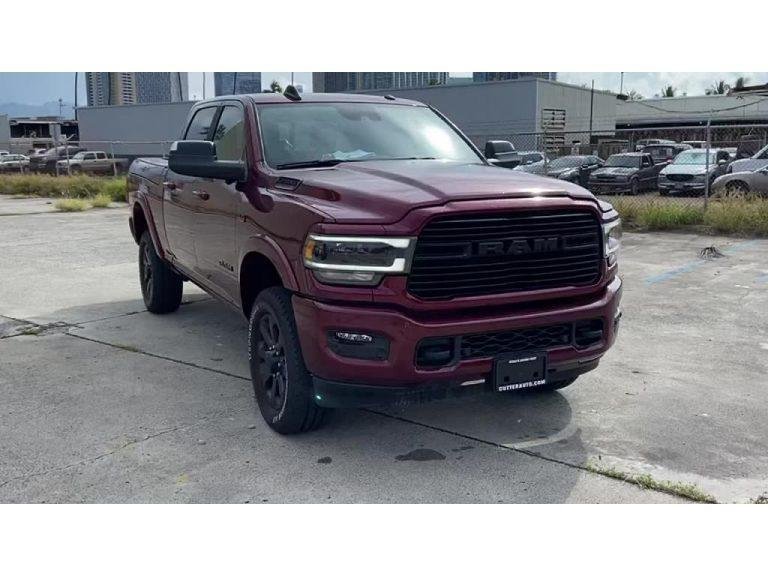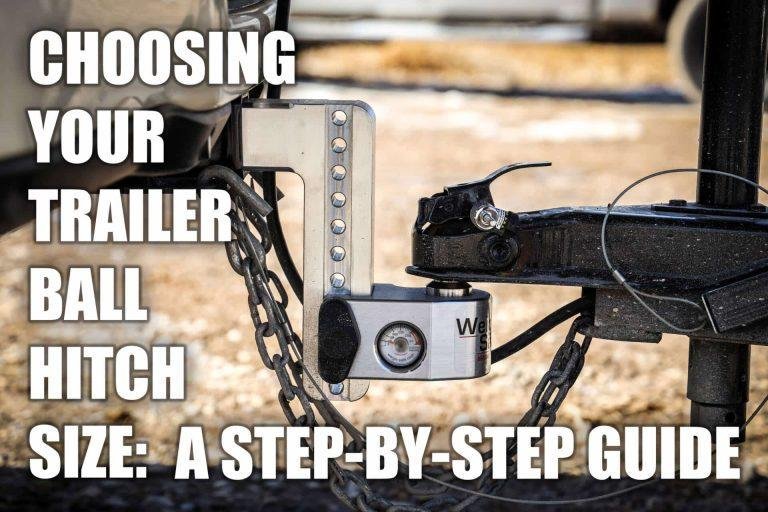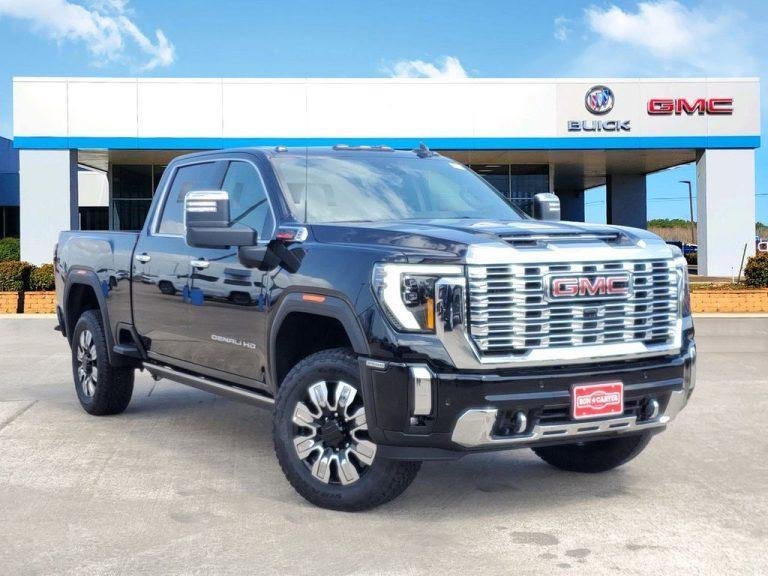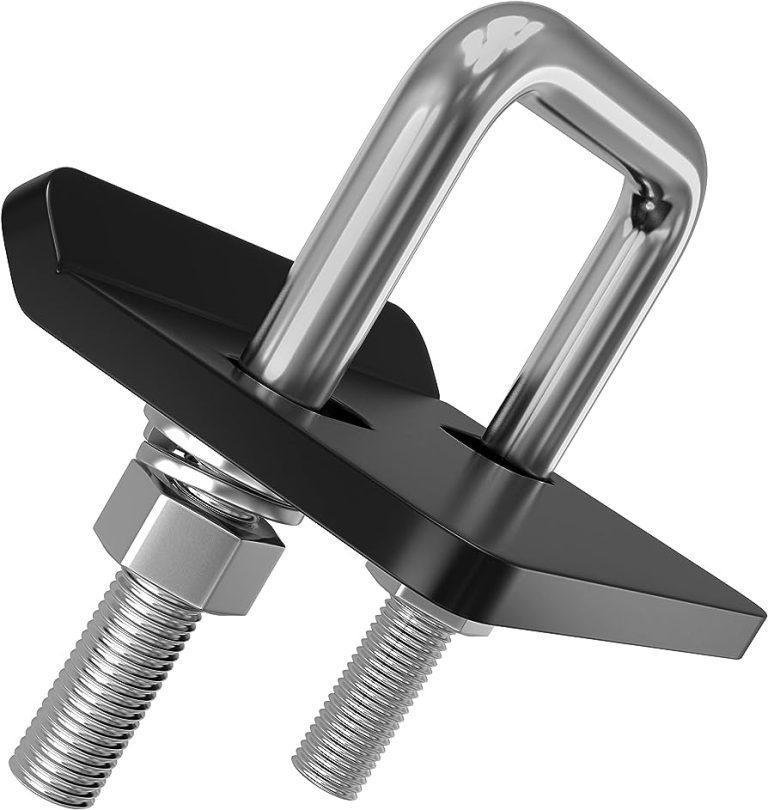For a 4 post lift, you need a minimum height of around 12 feet. This height is necessary to accommodate the vehicle and provide enough clearance for the lifted vehicle.
A 4 post lift is a popular choice for automotive workshops and garages as it allows for easy access to the underside of vehicles for maintenance and repairs. With a 4 post lift, you can lift vehicles efficiently and securely, making them a valuable addition to any automotive facility.
Whether you are a professional mechanic or a car enthusiast, investing in a 4 post lift with the appropriate height will greatly enhance your ability to work on vehicles with ease.
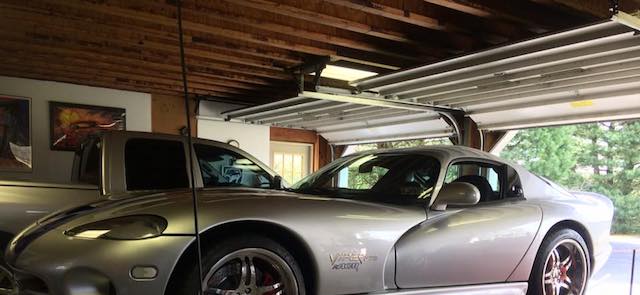
Credit: www.kwik-lift.com
Determining The Minimum Ceiling Height Requirements
Determining the minimum ceiling height requirements for a 4-post lift is crucial. The height needed highly depends on factors such as the type of vehicle being lifted and potential modifications. To ensure safety and functionality, it is essential to carefully calculate the necessary space for your lift.
Are you considering getting a 4 post lift for your garage or workshop? One crucial factor to take into account is the minimum ceiling height required for proper installation. In this section, we will explore the different types of 4 post lifts available and delve into the dimensions and specifications you need to consider.
By the end, you’ll have a clear understanding of the factors to consider when determining the minimum clearance height needed.
Exploring The Different Types Of 4 Post Lifts Available:
There are various types of 4 post lifts available in the market. Here are the main ones to consider:
- Standard duty: This type of 4 post lift is designed for regular maintenance and light-duty lifting. It typically has a lower overall height requirement.
- Heavy duty: If you need to elevate larger vehicles or perform heavy-duty work, a heavy-duty 4 post lift is recommended. Keep in mind that these lifts often require a higher ceiling clearance due to their heavier weight capacity.
Understanding The Dimensions And Specifications Of A Typical 4 Post Lift:
To determine the minimum ceiling height required for a 4 post lift, it is important to understand the dimensions and specifications of the lift itself. Here are the key factors to consider:
- Overall height: This refers to the total height of the lift, including the top beam and any additional accessories or extensions. The overall height can vary depending on the type and model of the lift.
- Runway height: The height of the runways is another vital dimension to consider. This is the working space between the lower and upper beams of the lift where the vehicle will be positioned.
- Clearance height: The clearance height is the minimum distance required between the top surface of the lifted vehicle and the ceiling. This clearance is essential to ensure there is enough space to maneuver the vehicle safely.
Factors To Consider When Determining The Minimum Clearance Height Needed:
When calculating the minimum clearance height needed for a 4 post lift, several factors come into play. Consider the following:
- Vehicle height: Measure the tallest vehicle you plan to lift to ensure the lift can accommodate it. Keep in mind that torsion bars, roof racks, or other accessories may add to the height.
- Lifting height: Determine the maximum lifting height you require for your intended purposes. This will affect the overall clearance needed.
- Safety considerations: It’s crucial to account for additional clearance to ensure that the lift’s safety features, such as lock positions and safety locks, function effectively. This ensures the lifted vehicle remains secure during maintenance or storage.
When determining the minimum ceiling height requirements for a 4 post lift, consider the type of lift, dimensions, and specifications, as well as factors such as vehicle height, lifting height, and safety requirements. By carefully evaluating these factors, you can ensure that your chosen 4 post lift will fit and function effectively in your space.
Practical Considerations When Planning For A 4 Post Lift
When planning for a 4 post lift, it is essential to consider the height needed. Take into account the vehicles you will be lifting and ensure you have enough clearance to work comfortably and safely. Plan accordingly to avoid any potential issues with insufficient lift height.
If you’re considering installing a 4 post lift in your garage or workshop, it’s essential to plan ahead and ensure you have enough height to accommodate the lift and the vehicles you’ll be working with. Here are some practical considerations to keep in mind when planning for a 4 post lift:
Examining The Required Overhead Space For Vehicle Maneuvering:
- Determine the total height of the vehicle(s) you’ll be lifting, including any additional accessories or modifications.
- Measure the highest point of the vehicle, considering features such as roof racks, antennas, or aerials.
- Ensure that you have enough overhead clearance to park and move the vehicle(s) comfortably beneath the lift without any obstructions.
- Take into account the space needed for doors to open fully and for maneuvering the vehicle(s) in and out of the lift area.
Assessing The Additional Height Needed To Accommodate Tall Vehicles:
- If you work with taller vehicles or plan to in the future, make sure to account for extra clearance height in your calculations.
- Consider the maximum height of the tallest vehicle you’ll be working with to determine the additional height requirement for the lift.
- Keep in mind that some vehicles, like vans or trucks, may have raised roofs or elevated suspension systems that increase their overall height.
Taking Into Account The Lift’S Maximum Lifting Height And Vehicle Height Restrictions:
- Check the maximum lifting height of the 4 post lift you plan to install.
- Compare this lifting height to the height of the tallest vehicle you’ll be working on, ensuring there is sufficient clearance between the raised vehicle and the ceiling or any other obstructions.
- Also, consider vehicle height restrictions, such as those imposed by your local building codes or the capacity of your garage’s entrance.
Remember, careful planning is crucial to ensure you have adequate overhead space for vehicle maneuvering, assess the additional height needed for tall vehicles, and consider the lift’s maximum lifting height and vehicle height restrictions. By taking these practical considerations into account, you’ll be well-prepared to safely and efficiently work with a 4 post lift.
Height Calculation Methods For Optimal Clearance
Determining the necessary height for a 4 post lift is crucial. Optimal clearance can be achieved through various height calculation methods, ensuring safe and efficient operations for vehicles.
When it comes to installing a 4 post lift in your garage or workshop, determining the required ceiling height is crucial for optimal clearance. Here, we will explore the different methods for calculating the necessary height and consider various factors that can affect these calculations.
Additionally, we will provide examples and scenarios for different types of vehicles and lift configurations.
Using The Formula To Calculate The Required Ceiling Height For A 4 Post Lift
To ensure proper clearance for a 4 post lift, you can use a simple formula to calculate the required ceiling height. The formula is as follows:
Total lift height + (vehicle height / 2) + safety margin = required ceiling height
Here’s a breakdown of each component:
- Total lift height: This is the maximum height that the lift can achieve. Refer to the lift’s specifications or user manual to find this value.
- Vehicle height: Measure the height of the tallest vehicle you plan to lift on the four post lift. Make sure to measure from the ground to the highest point of the vehicle, which could be the roof, roof rack, or antenna.
- Safety margin: It’s advisable to include a safety margin to account for variations in vehicle heights and any unforeseen circumstances. A safety margin of 12 inches (30 cm) is commonly recommended.
By plugging these values into the formula, you can calculate the minimum required ceiling height to accommodate your 4 post lift.
Considering Various Factors That Can Affect The Calculated Height
In addition to using the formula mentioned earlier, there are several other factors that can influence the calculated height requirements for a 4 post lift. These factors include:
- Wheelbase: Longer wheelbases require more space between the lift posts to ensure stability. Consider the wheelbase of the vehicles you plan to lift and ensure that the lift offers sufficient space between the posts.
- Vehicle weight: Heavier vehicles create increased stress on the lift, which may require additional height to maintain safe clearance.
- Lift configuration: Different 4 post lift configurations can affect the overall height requirements. For instance, if your lift includes a rolling jack tray or an overhead beam for additional functionality, these components must be taken into account when calculating the required ceiling height.
Considering these factors alongside the formula will help you determine the appropriate height for your 4 post lift, ensuring safe and efficient operation.
Examples And Scenarios For Different Types Of Vehicles And Lift Configurations
Let’s explore some practical examples of calculating the required ceiling height for different types of vehicles and lift configurations:
- Example 1: Standard passenger vehicle
- Total lift height: 72 inches
- Vehicle height: 60 inches
- Safety margin: 12 inches
Calculation:
72 inches + (60 inches / 2) + 12 inches = 114 inches
In this scenario, a minimum ceiling height of 114 inches is needed to accommodate a standard passenger vehicle on the 4 post lift.
- Example 2: Heavy duty pickup truck
- Total lift height: 84 inches
- Vehicle height: 78 inches
- Safety margin: 12 inches
Calculation:
84 inches + (78 inches / 2) + 12 inches = 153 inches
For a heavy-duty pickup truck, a minimum ceiling height of 153 inches is required to ensure adequate clearance on the 4 post lift.
- Example 3: Lift configuration with overhead beam
- Total lift height: 78 inches
- Vehicle height: 62 inches
- Safety margin: 12 inches
- Overhead beam height: 10 inches
Calculation:
78 inches + (62 inches / 2) + 12 inches + 10 inches = 129 inches
In this case, considering the lift’s configuration with an overhead beam, a minimum ceiling height of 129 inches is necessary.
By understanding the formula, considering various factors, and analyzing specific examples or scenarios, you can ensure the correct ceiling height for your 4 post lift installation. Proper clearance is essential for a safe and efficient lifting experience for any vehicle type or lift configuration.
Adhering To Safety Standards And Regulations
For a 4 post lift, the height requirement varies depending on the specific model and the vehicles you intend to lift. It is crucial to adhere to safety standards and regulations to ensure the lift can accommodate the desired height and maintain stability during operations.
Familiarizing With Industry Guidelines For Lift Installation Clearances
When it comes to installing a 4 post lift, it is crucial to familiarize yourself with the industry guidelines for lift installation clearances. This will ensure that you have the proper understanding of the space requirements and safety regulations involved.
Here are the key points to keep in mind:
- Minimum ceiling height: The industry guidelines specify that a minimum ceiling height of at least 12 feet is required for proper installation of a 4 post lift. This clearance allows for the necessary overhead space when lifting vehicles and prevents any obstructions or hazards.
- Horizontal clearance: It is important to provide adequate horizontal clearance on all sides of the lift. The guidelines recommend a minimum clearance of at least 3 feet from any walls, columns, or other structural elements.
- Platform dimensions: The dimensions of the lift platform also play a role in determining the required clearance. It is essential to adhere to the manufacturer’s specifications and guidelines when selecting a lift model to ensure proper fitment within the available space.
Recognizing The Importance Of Complying With Local Building Codes
In addition to the industry guidelines, it is equally important to recognize the significance of complying with local building codes when installing a 4 post lift. Local building codes dictate specific regulations and requirements that must be met to ensure the safety of the lift installation.
Here are some key considerations:
- Consult with authorities: Prior to installing a lift, it is essential to consult with the local building authorities to determine the specific requirements for your area. They will provide insights into any height restrictions, structural considerations, and safety standards that need to be followed.
- Obtaining permits: In most cases, obtaining permits for the lift installation is mandatory. This ensures that the installation meets all the necessary codes and regulations. Failure to obtain permits can lead to penalties and legal issues in the future.
- Professional installation: To ensure compliance with local building codes, it is recommended to hire a professional installer who is familiar with the specific regulations in your area. They will have the knowledge and experience to properly install the lift while adhering to all safety standards.
Understanding The Safety Implications Of Insufficient Lift Clearance
Insufficient lift clearance can have serious safety implications and should be avoided at all costs. It is crucial to understand the potential risks associated with inadequate clearance and take appropriate measures to prevent accidents. Here are the key points to consider:
- Vehicle damage: Insufficient clearance can lead to collisions between the lifted vehicle and surrounding structures, causing damage to both the vehicle and the lift itself. This can result in expensive repairs and pose a safety risk.
- Operator safety: Insufficient clearance can restrict the movement of the operator, making it difficult for them to perform tasks safely. It is vital to provide enough space for operators to maneuver comfortably, ensuring their safety during the lifting process.
- Structural integrity: Inadequate clearance can exert excessive strain on the lift and its components. This can compromise the structural integrity of the lift, leading to malfunctions and potential accidents.
By adhering to the safety standards and regulations, you can mitigate the risks associated with insufficient lift clearance and ensure a safe and efficient lifting operation. Remember to familiarize yourself with industry guidelines, comply with local building codes, and prioritize safety above all else.
Ensuring Adequate Workspace And Accessibility
The height required for a 4 post lift depends on the vehicles you will be working with. It is important to ensure adequate workspace and accessibility by considering the height of the lift to accommodate different vehicles and provide easy access for repairs and servicing.
Determining the amount of additional space needed for comfortable work:
- Allow at least 3 feet of additional space around each side of the lift to comfortably work on the vehicle.
- Take into account the height of the tallest vehicle that will be lifted and add that to the minimum ceiling height to ensure enough vertical clearance.
Designing the layout to allow easy access for mechanics and tools:
- Opt for a wider lift with a larger platform to provide ample room for mechanics to maneuver around the vehicle.
- Consider lift models with removable ramps or sliding plates to easily access the underside of the vehicle.
- Position the lift in a central location, allowing easy access to tools and equipment.
Considering the overall dimensions of the workspace in relation to lift clearance:
- Measure the available space in your garage or workshop before deciding on the lift’s dimensions.
- Ensure that the lift’s height and width are compatible with the available clearance in your workspace.
- Take into account any overhead obstructions, such as garage doors or lights, to prevent any potential damages.
By following these guidelines, you can guarantee a workspace that provides enough room for comfortable work and ensures easy accessibility for mechanics and tools. Remember to measure the available area, consider the dimensions of the lift, and account for any potential overhead obstructions.
With proper planning, you can create an efficient and user-friendly environment for your four-post lift.
Recommended Brands And Models For Different Clearance Requirements
For different clearance requirements, there are recommended brands and models available for 4 post lifts. The required height depends on the specific needs of the user and can vary significantly. A thorough evaluation of the lift’s specifications and the space available is essential for choosing the right brand and model.
Exploring Popular 4 Post Lift Brands And Models Available In The Market
If you’re in the market for a 4 post lift, it’s important to consider the clearance height specifications and features that different brands and models offer. With several options available, finding the right lift for your specific clearance requirements can be a bit overwhelming.
To help you make an informed decision, let’s take a closer look at some popular brands and models that are worth considering:
- Bendpak hd-9: This lift offers a maximum lifting height of 85 inches, making it suitable for vehicles with a higher clearance. It also comes with a built-in safety lock system and heavy-duty steel construction, ensuring durability and reliability.
- Dannmar d-7x: With a lifting height of up to 81 inches, the dannmar d-7x is a solid choice for vehicles with standard clearance. It features automatic safety locks, allowing for safe and secure operations. Additionally, its steel construction provides sturdy support for your vehicle.
- Triumph nss-8: The triumph nss-8 offers a lifting height of 78 inches, making it ideal for vehicles with limited clearance. It boasts a dual cylinder hydraulic system for smooth lifting and lowering, along with a lock release system for added safety.
- Atlas garage pro 8,000: Designed for vehicles with lower clearance, the atlas garage pro 8,000 has a lifting height of 71 inches. It comes with a single-point lock release system and automatic safety locks, ensuring stability and ease of use.
- Rotary lift spoa10: With a lifting height of 81 inches, the rotary lift spoa10 is well-suited for vehicles with average clearance. It features an automatic safety locking system and durable construction for long-lasting performance.
Considering these popular brands and models, you’ll be able to find a 4 post lift that meets your specific clearance requirements. Whether you need a higher lifting height, standard clearance support, or a lift for vehicles with lower clearance, there’s an option available to suit your needs.
Take into account the features and specifications of each lift and choose the one that best fits your requirements.
Installation Tips And Best Practices For Optimal Clearance
When installing a 4 post lift, it is important to consider the required height for optimal clearance. By following best practices and guidelines, you can ensure a successful installation that allows for efficient vehicle lifting and maintenance.
Tips For Properly Measuring The Available Space Before Purchasing A Lift:
- Measure the height of your tallest vehicle: Measure the total height of the tallest vehicle you plan to lift using the 4 post lift. This will give you a clear idea of the minimum clearance height you need.
- Consider additional height for safety: While measuring the vehicle’s height, it is important to add extra clearance for safety purposes. This will ensure that you have enough space for maneuvering and working comfortably.
- Take into account the lift height: Check the specifications of the 4 post lift you intend to purchase and determine the height of the lift itself. This height needs to be added to the overall height of your vehicle to calculate the required clearance height.
- Account for any obstructions: Make note of any overhead obstructions, such as lighting fixtures or ceiling beams, that may reduce the available height. Be sure to factor in the height of these obstructions to determine the minimum required clearance height.
Preparing The Area For Lift Installation To Ensure Maximum Clearance:
- Clear the area of debris: Before installing the 4 post lift, ensure that the surrounding area is free from any debris or objects that may obstruct the movement of the lift. This will help maximize clearance when raising and lowering vehicles.
- Check the flooring surface: The lift installation area should have a flat and level surface to ensure stability and prevent any tilting or shifting. Uneven surfaces can interfere with the lifting and lowering process and create height clearance issues.
- Consider ventilation and lighting: Adequate ventilation and lighting are essential for a safe working environment. Ensure that the installation area has proper ventilation to avoid build-up of exhaust fumes and sufficient lighting for clear visibility during vehicle maintenance.
Common Mistakes To Avoid During The Installation Process To Maintain Clearance:
- Neglecting to account for lift dimensions: One common mistake is not considering the dimensions of the lift itself when measuring the available space. Double-check the specifications of the 4 post lift, including height, width, and depth, to prevent any surprises during installation.
- Overlooking ceiling height restrictions: Many garages or workshops have limited ceiling heights, and failing to consider this can result in insufficient clearance for the 4 post lift. Always confirm the ceiling height and compare it to the required clearance height before purchasing and installing the lift.
- Disregarding safety regulations and guidelines: Install the lift according to the manufacturer’s instructions and adhere to all safety regulations. Failure to do so can lead to accidents or damage to vehicles and infrastructure, compromising the desired clearance height.
- Forgetting to account for vehicle accessories: Some vehicles may have additional accessories such as roof racks or antennas that could increase their overall height. Take these accessories into account when measuring the vehicle’s height to maintain optimal clearance for the lift.
Remember, measuring the available space accurately, preparing the installation area properly, and avoiding common mistakes are vital for achieving optimal clearance when using a 4 post lift. By following these tips and best practices, you can ensure a safe and efficient lifting experience for your vehicles.
Frequently Asked Questions For How Much Height Do You Need For A 4 Post Lift?
What Is The Minimum Ceiling Height For A 4 Post Hoist?
The minimum ceiling height for a 4 post hoist is determined by the overall height of the hoist itself. Typically, a minimum ceiling height of around 11 feet is required to accommodate a 4 post hoist. The hoist’s height can vary depending on factors such as the weight capacity and design of the hoist.
It’s important to consider the specific requirements of the hoist you’re using to ensure you have enough clearance in your space.
Can A Car Lift Fit In A 10 Foot Ceiling?
A car lift can fit in a 10-foot ceiling.
How High Does My Garage Need To Be For A Lift?
In order to accommodate a car lift, your garage should have a minimum ceiling height of at least 12 feet. This ensures sufficient clearance for the raised vehicle and allows for safe operation. Having a higher ceiling allows for larger lifts or taller vehicles to be accommodated.
Before purchasing a lift, it is crucial to measure the height of your garage accurately and consider any obstructions like lighting fixtures or garage door mechanisms. It is also recommended to consult the lift manufacturer’s specifications and requirements to ensure proper fitment and safety.
Investing in a car lift can greatly increase the functionality of your garage and provide convenience for vehicle maintenance and storage.
Is 4 Inches Of Concrete Enough For A 2 Post Lift?
Yes, 4 inches of concrete is typically sufficient for a 2 post lift. The thickness of the concrete slab needed for a 2 post lift depends on the weight capacity and specifications of the lift. Most 2 post lifts require a minimum of 4 inches of concrete to support their weight.
This thickness allows for the necessary stability and load-bearing capacity. It is important to ensure that the concrete is properly cured and meets the manufacturer’s recommendations for the specific lift being installed. Adequate reinforcement, such as rebar, may also be necessary depending on the conditions and load requirements.
It’s crucial to consult the lift manufacturer’s guidelines or a professional installer to ensure that the concrete thickness meets the necessary safety requirements.
Conclusion
Determining the height needed for a 4 post lift is crucial for a smooth and efficient lifting process. By considering the overall height of your vehicle, plus a few extra feet for clearance, you can ensure that you have enough space for safe operation.
It is recommended to consult the manufacturer’s guidelines and specifications to find the exact height requirements for your specific lift model. Remember to factor in any additional accessories or modifications that may affect the height of your vehicle. Taking the time to accurately measure and calculate the necessary height for your 4 post lift will not only guarantee its functionality, but also promote a secure and hassle-free lifting experience.
So, before making a purchase or installation, be sure to carefully consider this important factor and choose the right lift for your needs.

